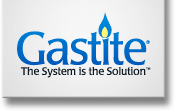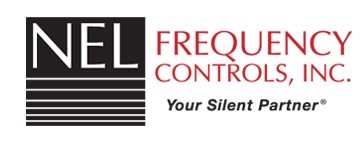Automotive Fuel Pipes Market Status and Trend Analysis 2017-2026
- Report Code : 99S2204499
- Published On: Dec, 2020
- Category : Automotive & Transportation
- Pages : 97
-
Further key aspects of the report indicate that:
Chapter 1: Research Scope: Product Definition, Type, End-Use & Methodology
Chapter 2: Global Industry
Chapter 3: Market Dynamics
Chapter 4: Global Market Segmentation by region, type and End-Use
Chapter 5: North America Market Segmentation by region, type and End-Use
Chapter 6: Europe Market Segmentation by region, type and End-Use
Chapter 7: Asia-Pacific Market Segmentation by region, type and End-Use
Chapter 8: South America Market Segmentation by region, type and End-Use
Chapter 9: Middle East and Africa Market Segmentation by region, type and End-Use.
Chapter 10: Market Competition by Companies
Chapter 11: Market forecast and environment forecast.
Chapter 12: Industry .
The global Automotive Fuel Pipes market has the potential to grow with xx million USD with growing CAGR in the forecast period from 2021f to 2026f.
Based on the type of product, the global Automotive Fuel Pipes market segmented into
Fuel Filler Hose
Diesel Exhaust Fluid Hose
Diesel Emission Fluid Hose
Others
Based on the end-use, the global Automotive Fuel Pipes market classified into
Passenger Car
M&HCV
LCV
Based on geography, the global Automotive Fuel Pipes market segmented into
North America [U.S., Canada, Mexico]
Europe [Germany, UK, France, Italy, Rest of Europe]
Asia-Pacific [China, India, Japan, South Korea, Southeast Asia, Australia, Rest of Asia Pacific]
South America [Brazil, Argentina, Rest of Latin America]
Middle East & Africa [GCC, North Africa, South Africa, Rest of Middle East and Africa]
And the major players included in the report are
Continental
Sumitomo Riko
Magna International
Gates Corporation
Eaton
DuPont
Keihin Corporation
-
With tables and figures helping analyze worldwide Automotive Fuel Pipes market, this research provides key statistics on the state of the industry and is a valuable source of guidance and direction for companies and individuals interested in the market.
1 RESEARCH SCOPE1.1 Research Product Definition
1.2 Research Segmentation
1.2.1 Product Type
1.2.2 Main product Type of Major Players1.3 Demand Overview
1.4 Research Methodology
2 GLOBAL AUTOMOTIVE FUEL PIPES INDUSTRY2.1 Summary about Automotive Fuel Pipes Industry
2.2 Automotive Fuel Pipes Market Trends
2.2.1 Automotive Fuel Pipes Production & Consumption Trends
2.2.2 Automotive Fuel Pipes Demand Structure Trends2.3 Automotive Fuel Pipes Cost & Price
3 MARKET DYNAMICS3.1 Manufacturing & Purchasing Behavior in 2020
3.2 Market Development under the Impact of COVID-19
3.2.1 Drivers
3.2.2 Restraints
3.2.3 Opportunity
3.2.4 Risk
4 GLOBAL MARKET SEGMENTATION4.1 Region Segmentation (2017 to 2021f)
4.1.1 North America (U.S., Canada and Mexico)
4.1.2 Europe (Germany, UK, France, Italy, Rest of Europe)
4.1.3 Asia-Pacific (China, India, Japan, South Korea, Southeast Asia, Australia, Rest of Asia Pacific)
4.1.4 South America (Brazil,, Argentina, Rest of Latin America)
4.1.5 Middle East and Africa (GCC, North Africa, South Africa, Rest of Middle East and Africa)4.2 Product Type Segmentation (2017 to 2021f)
4.2.1 Fuel Filler Hose
4.2.2 Diesel Exhaust Fluid Hose
4.2.3 Diesel Emission Fluid Hose
4.2.4 Others4.3 Consumption Segmentation (2017 to 2021f)
4.3.1 Passenger Car
4.3.2 M&HCV
4.3.3 LCV
5 NORTH AMERICA MARKET SEGMENT5.1 Region Segmentation (2017 to 2021f)
5.1.1 U.S.
5.1.2 Canada
5.1.3 Mexico5.2 Product Type Segmentation (2017 to 2021f)
5.2.1 Fuel Filler Hose
5.2.2 Diesel Exhaust Fluid Hose
5.2.3 Diesel Emission Fluid Hose
5.2.4 Others5.3 Consumption Segmentation (2017 to 2021f)
5.3.1 Passenger Car
5.3.2 M&HCV
5.3.3 LCV5.4 Impact of COVID-19 in North America
6 EUROPE MARKET SEGMENTATION6.1 Region Segmentation (2017 to 2021f)
6.1.1 Germany
6.1.2 UK
6.1.3 France
6.1.4 Italy
6.1.5 Rest of Europe6.2 Product Type Segmentation (2017 to 2021f)
6.2.1 Fuel Filler Hose
6.2.2 Diesel Exhaust Fluid Hose
6.2.3 Diesel Emission Fluid Hose
6.2.4 Others6.3 Consumption Segmentation (2017 to 2021f)
6.3.1 Passenger Car
6.3.2 M&HCV
6.3.3 LCV6.4 Impact of COVID-19 in Europe
7 ASIA-PACIFIC MARKET SEGMENTATION7.1 Region Segmentation (2017 to 2021f)
7.1.1 China
7.1.2 India
7.1.3 Japan
7.1.4 South Korea
7.1.5 Southeast Asia
7.1.6 Australia
7.1.7 Rest of Asia Pacific7.2 Product Type Segmentation (2017 to 2021f)
7.2.1 Fuel Filler Hose
7.2.2 Diesel Exhaust Fluid Hose
7.2.3 Diesel Emission Fluid Hose
7.2.4 Others7.3 Consumption Segmentation (2017 to 2021f)
7.3.1 Passenger Car
7.3.2 M&HCV
7.3.3 LCV7.4 Impact of COVID-19 in Europe
8 SOUTH AMERICA MARKET SEGMENTATION8.1 Region Segmentation (2017 to 2021f)
8.1.1 Brazil
8.1.2 Argentina
8.1.3 Rest of Latin America8.2 Product Type Segmentation (2017 to 2021f)
8.2.1 Fuel Filler Hose
8.2.2 Diesel Exhaust Fluid Hose
8.2.3 Diesel Emission Fluid Hose
8.2.4 Others8.3 Consumption Segmentation (2017 to 2021f)
8.3.1 Passenger Car
8.3.2 M&HCV
8.3.3 LCV8.4 Impact of COVID-19 in Europe
9 MIDDLE EAST AND AFRICA MARKET SEGMENTATION9.1 Region Segmentation (2017 to 2021f)
9.1.1 GCC
9.1.2 North Africa
9.1.3 South Africa
9.1.4 Rest of Middle East and Africa9.2 Product Type Segmentation (2017 to 2021f)
9.2.1 Fuel Filler Hose
9.2.2 Diesel Exhaust Fluid Hose
9.2.3 Diesel Emission Fluid Hose
9.2.4 Others9.3 Consumption Segmentation (2017 to 2021f)
9.3.1 Passenger Car
9.3.2 M&HCV
9.3.3 LCV9.4 Impact of COVID-19 in Europe
10 COMPETITION OF MAJOR PLAYERS10.1 Brief Introduction of Major Players
10.1.1 Continental
10.1.2 Sumitomo Riko
10.1.3 Magna International
10.1.4 Gates Corporation
10.1.5 Eaton
10.1.6 DuPont
10.1.7 Keihin Corporation10.2 Automotive Fuel Pipes Sales Date of Major Players (2017-2020e)
10.2.1 Continental
10.2.2 Sumitomo Riko
10.2.3 Magna International
10.2.4 Gates Corporation
10.2.5 Eaton
10.2.6 DuPont
10.2.7 Keihin Corporation10.3 Market Distribution of Major Players
10.4 Global Competition Segmentation
11 MARKET FORECAST11.1 Forecast by Region
11.2 Forecast by Demand
11.3 Environment Forecast
11.3.1 Impact of COVID-19
11.3.2 Geopolitics Overview
11.3.3 Economic Overview of Major Countries
12 REPORT SUMMARY STATEMENT
-
The Automotive Fuel Pipes Market has been segregated into various crucial divisions including applications, types, and regions. Each market segment is intensively studied in the report contemplating its market acceptance, worthiness, demand, and growth prospects. The segmentation analysis will help the client to customize their marketing approach to have a better command of each segment and to identify the most prospective customer base.
Report Objectives / Segmentation Covered :
By Companies / players:
By Regions:
By Type:
By Application:
Frequently asked questions(FAQ's):
A large number of Global Automotive Fuel Pipes players are focusing on individualized and innovative technologies that will provide the necessary impetus for profit and growth in the coming years.
During the projected year from 2025 to 2030, the Automotive Fuel Pipes Market is expected to grow at a CAGR of xx%.
In addition to the Automotive Fuel Pipes Market share analysis by competitors, the report also includes chapters on the HHI Index, CR4, and CR8 to characterize the concentration rate and competitive character of the Automotive Fuel Pipes Market.
In this highly competitive and rapidly evolving Automotive Fuel Pipes Industry, top strategic priorities such as innovation, diversification, and M&A would remain consistent.















